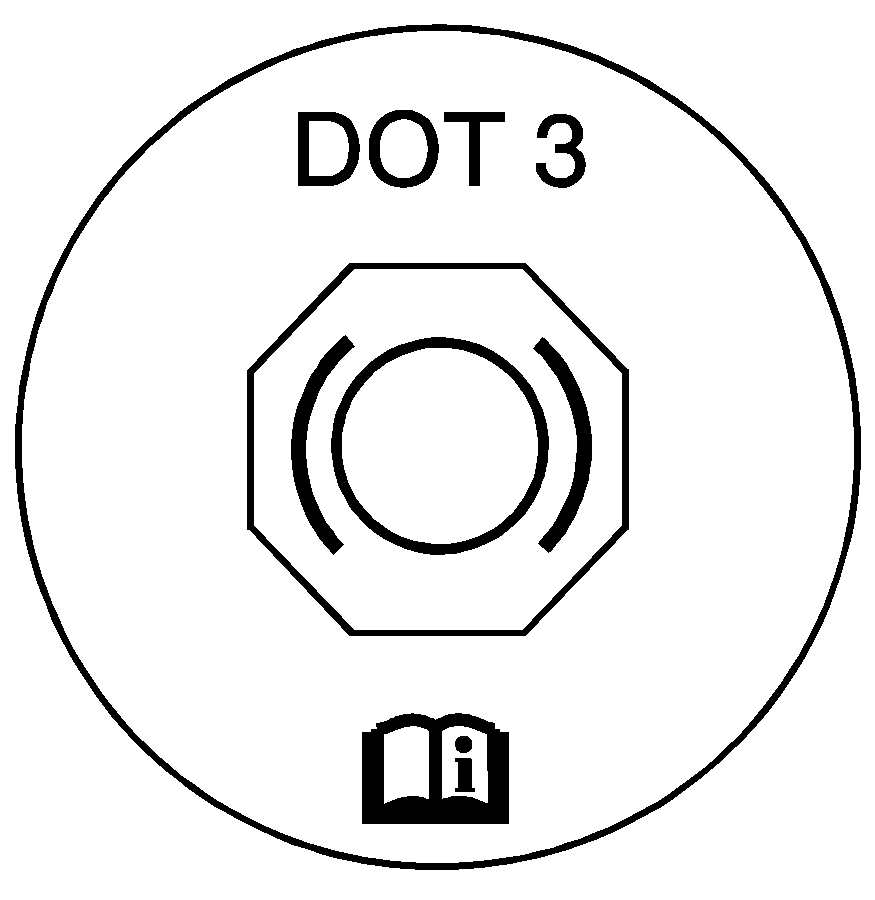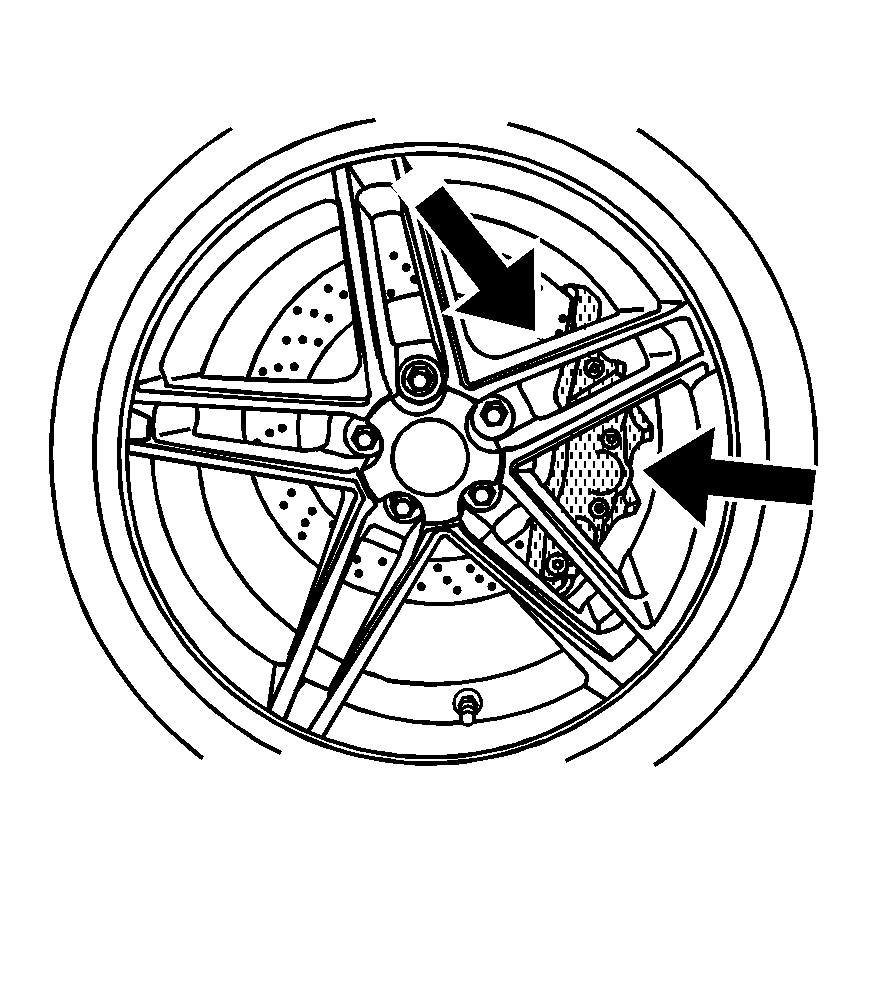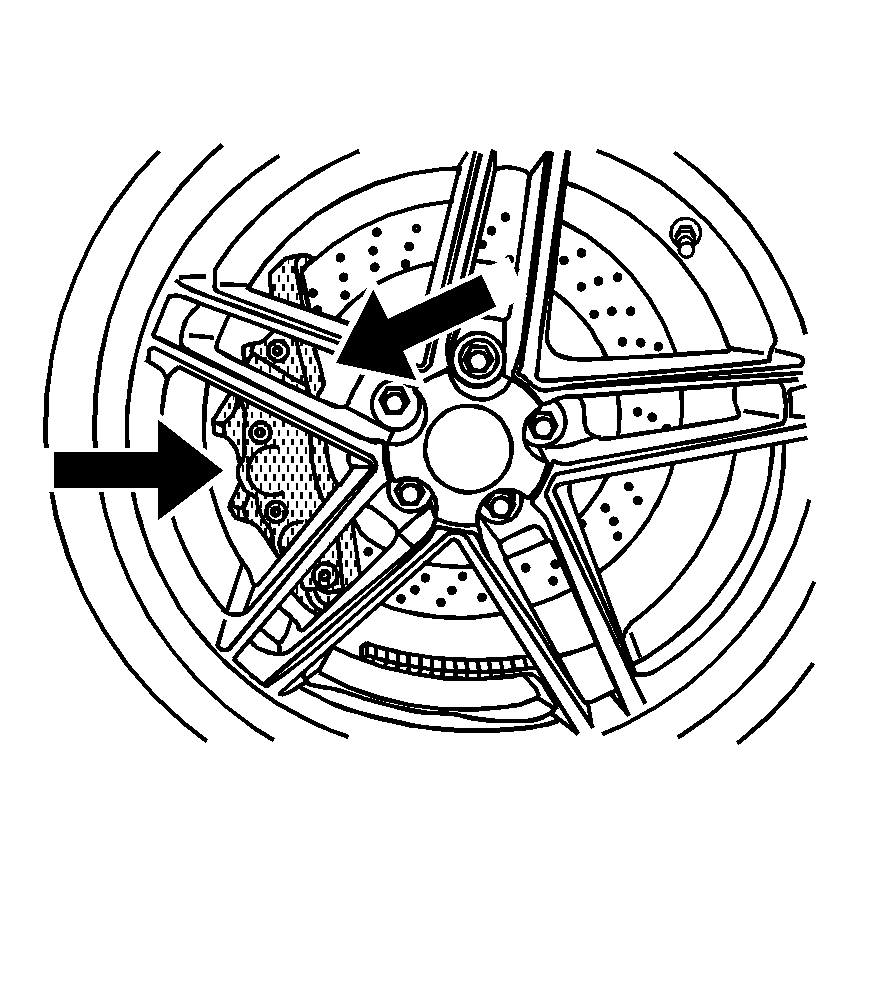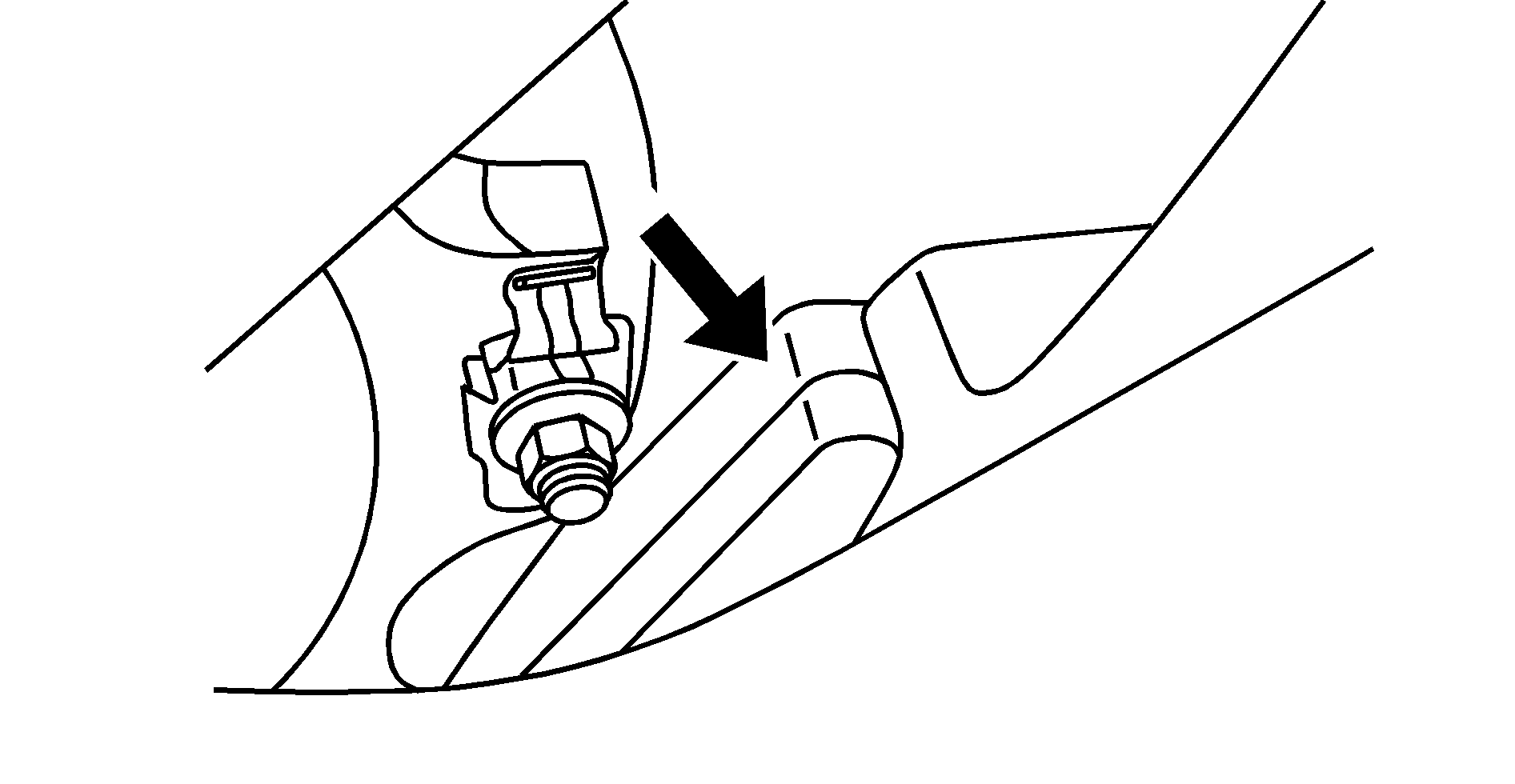Brake Fluid

The brake master cylinder reservoir is filled with DOT 3 brake fluid. See Engine Compartment Overview for the location of the reservoir.
There are only two reasons why the brake fluid level in the reservoir might go down:
| • | The brake fluid level goes down because of normal brake lining wear. When new linings are installed, the fluid level goes back up. |
| • | A fluid leak in the brake hydraulic system can also cause a low fluid level. Have the brake hydraulic system fixed, since a leak means that sooner or later the brakes will not work well. |
Do not top off the brake fluid. Adding fluid does not correct a leak. If fluid is added when the linings are worn, there will be too much fluid when new brake linings are installed. Add or remove brake fluid, as necessary, only when work is done on the brake hydraulic system.
Caution: If too much brake fluid is added, it can spill on the engine and burn, if the engine is hot enough. You or others could be burned, and the vehicle could be damaged. Add brake fluid only when work is done on the brake hydraulic system. See "Checking Brake Fluid" in this section.
Refer to the Maintenance Schedule to determine when to check the brake fluid. See Scheduled Maintenance.
Checking Brake Fluid
Check brake fluid by looking at the brake fluid reservoir. See Engine Compartment Overview.
The fluid level should be above the MIN mark on the reservoir. If it is not, have the brake hydraulic system checked to see if there is a leak.
After work is done on the brake hydraulic system, make sure the level is between the MIN and MAX marks.
What to Add
Use only new DOT 3 brake fluid from a sealed container. See Recommended Fluids and Lubricants.
Always clean the brake fluid reservoir cap and the area around the cap before removing it. This helps keep dirt from entering the reservoir.
Caution: With the wrong kind of fluid in the brake hydraulic system, the brakes might not work well. This could cause a crash. Always use the proper brake fluid.
Notice:
• Using the wrong fluid can badly damage brake hydraulic system parts. For
example, just a few drops of mineral-based oil, such as engine oil, in the brake hydraulic
system can damage brake hydraulic system parts so badly that they will have to be
replaced. Do not let someone put in the wrong kind of fluid. • If brake fluid is spilled on the vehicle's painted surfaces, the paint
finish can be damaged. Be careful not to spill brake fluid on the vehicle.
If you do, wash it off immediately. See
Washing Your Vehicle
.
Brake Wear (Except ZR1)
This vehicle has disc brakes. Disc brake pads have built-in wear indicators that make a high-pitched warning sound when the brake pads are worn and new pads are needed. The sound can come and go or be heard all the time the vehicle is moving, except when applying the brake pedal firmly.
Caution: The brake wear warning sound means that soon the brakes will not work well. That could lead to an accident. When the brake wear warning sound is heard, have the vehicle serviced.
Notice: Continuing to drive with worn-out brake pads could result in costly brake repair.
Some driving conditions or climates can cause a brake squeal when the brakes are first applied or lightly applied. This does not mean something is wrong with the brakes.
Brake linings should always be replaced as complete axle sets.
Brake Wear (ZR1 Only)
The ZR1 model does not have built-in brake pad wear indicators and periodic visual inspection of the brake pads is required to determine when to replace the brake pads.
Notice: Continuing to drive with worn-out brake pads could result in costly brake repair.
| • | Make sure that the brakes have been given sufficient time to cool and then set the park brake. |
Rear

Front

| • | Brake pads can be visually inspected through the wheel by inspecting the outer brake pads at each wheel. |
| • | Brake pads should be replaced when worn to two mm of pad thickness. New pads are 10 mm thick. |
| • | In addition, brake pad inspection is required any time the tires are removed. |

The ZR1 also has an electronic brake pad wear sensor system. When pads are worn, the CHANGE BRAKE PADS message displays in the Driver Information Center. See DIC Warnings and Messages.
Some driving conditions or climates can cause a brake squeal when the brakes are first applied or lightly applied. This does not mean something is wrong with the brakes.
Brake linings should always be replaced as complete axle sets.
Brake Rotor Wear
ZR1 models have ceramic brake rotors. Rotors should be visually inspected whenever the brake pads are replaced. Rotors also need to be weighed before brake pads are replaced to confirm that the rotor mass is greater than the wear-out mass printed on the rotor. The rotor can be reused if the weight of the rotor is above the mass limit. Rotor inspection and weighing methods can be found in the service manual. See Service Publications Ordering Information.
Brake Rotor Protector
Caution: Ceramic rotors will be very hot after operation and touching them may cause burns. Be sure brake system is completely cool prior to installation of protector, or coming in contact with them.
Notice: Rotors may be chipped if hard contact is made with the wheel during wheel installation or removal. Always use the rotor protectors. Be sure to carefully follow wheel removal and installation instructions.


A rotor protector should always be installed before any wheel removal. The protector can be installed by feeding it through the wheel spokes and slipping it over the outer edge of the rotor. Leave the protector in place, over the rotor edge, until the wheel is re-installed. Rotor protectors are available through your dealer/retailer.
Brake Pedal Travel
See your dealer/retailer if the brake pedal does not return to normal height, or if there is a rapid increase in pedal travel. This could be a sign that brake service might be required.
Brake Adjustment
Every brake stop, the disc brakes automatically adjust for wear.
Replacing Brake System Parts
The braking system on a vehicle is complex. Its many parts have to be of top quality and work well together if the vehicle is to have really good braking. The vehicle was designed and tested with top-quality brake parts. When parts of the braking system are replaced -- for example, when the brake linings wear down and new ones are installed -- be sure to get new approved replacement parts. If this is not done, the brakes might not work properly. For example, if someone puts in brake linings that are wrong for the vehicle, the balance between the front and rear brakes can change -- for the worse. The braking performance expected can change in many other ways if the wrong replacement brake parts are installed.
